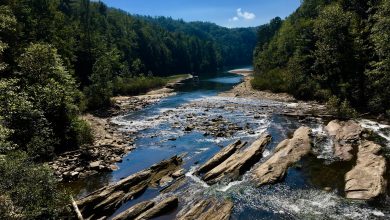
[ad_1]
Embarking on the Camino del Norte offers a unique blend of coastal views, historical paths, and a deeply personal journey. Before you lace up your hiking boots and set out, there are a few key things you should know to make the most of your pilgrimage along Spain’s northern coast. This guide will arm you with essential tips and insights to navigate the route confidently and enjoyably.
When to Walk the Camino del Norte
Timing can make all the difference when walking the Camino del Norte. Ideally, aim for late spring (May to June) or early fall (September to October). These months offer milder weather, fewer crowds than the peak summer season, and the scenic beauty of blooming or autumnal landscapes. Walking during these times ensures a more comfortable and visually rewarding experience.
What to Expect on the Camino del Norte Route
Unlike its more famous cousin, the Camino Frances, the Camino del Norte is less travelled but boasts dramatic coastal scenery and quieter paths. Spanning approximately 825 kilometres from Irún to Santiago de Compostela, the route takes you through quaint fishing villages, secluded beaches, and lush greenery. It’s moderately challenging, with some days requiring climbs over coastal hills, so a good fitness level is beneficial.
Packing Essentials
Packing wisely can greatly enhance your comfort and enjoyment on the Camino. Essentials include:
- Lightweight, breathable clothing to adapt to changing temperatures.
- Waterproof gear, including a jacket and pack cover, to stay dry.
- Comfortable footwear: well-broken-in hiking boots or shoes with good grip.
- A lightweight backpack with a capacity of about 30-40 litres.
- Navigation tools like a reliable GPS app or a detailed guidebook.
- Basic first aid kit for blisters and minor injuries.
- Remember, every kilogram counts, so pack light!
Accommodation Along the Way
The Camino del Norte is dotted with albergues (pilgrim hostels), guesthouses, and hotels. Booking in advance isn’t always necessary except during high season or in smaller towns with limited options. Many pilgrims value the flexibility of finding accommodation as they go, allowing them to adjust their daily walking plans according to their energy levels and interests.
Local Delights and Cultural Insights
One of the joys of the Camino is the culinary and cultural experiences. In the Basque Country, delight in pintxos (small snacks) and local txakoli wine. In Asturias, try the hearty fabada asturiana (bean stew), and in Galicia, savour the world-renowned pulpo a la gallega (octopus dish). Each region offers a unique glimpse into Spain’s diverse cultural landscape, so take the time to engage with locals and embrace regional traditions.
Final Thoughts and Tips
Walking the Camino del Norte is as much about personal discovery as it is about physical challenge. Here are a few tips to ensure a memorable journey:
- Start each day early to enjoy quieter trails and cooler temperatures.
- Stay hydrated and take regular breaks, especially on more strenuous sections.
- Reflect each day on your experiences; many find keeping a journal enriches their journey.
- Lastly, remain open to the Camino’s surprises and challenges—they’re part of what makes the experience transformative.
By preparing well and embracing the spirit of the pilgrimage, you’ll not only reach Santiago de Compostela but also enjoy a journey filled with beauty, challenge, and personal growth. Buen Camino!
[ad_2]
Source link






